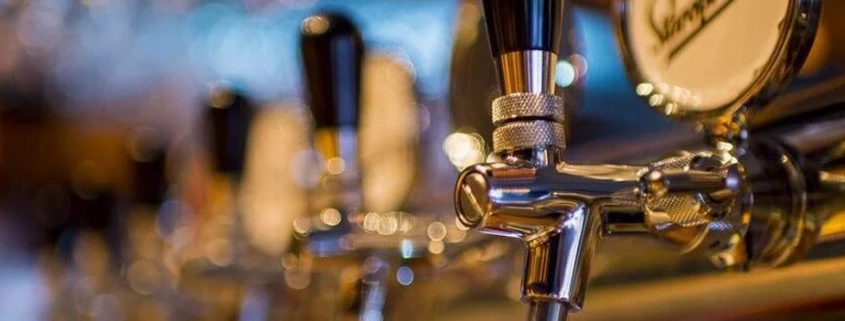CO2 Danger in Bars and Restaurants
Little known to the public and professionals, used in beer dispensers and carbonation machines dangers of carbon dioxide is often underestimated. In fact, restaurants, bars and breweries are constantly CO2 tanks for serving draft beer and soft drinks stocks . Inhalation of high CO2 concentrations accumulated in closed spaces where gas cylinders are located causes many sudden accidental deaths every year.
Carbon dioxide in bars and restaurants
CO2 and beer
Beer, very commonly consumed in bars and restaurants, is a carbonated beverage that contains carbon dioxide. In alcoholic beverages such as champagne, cider or beer, natural fermentation is what produces the CO2 in the beverage. Once in the drink, the goal is to not allow the customer to escape until they consume it. beer tap And CO2 filling This is exactly where it comes into play.
Although beer is the oldest man-made beverage in the world, the beer tap was only invented at the end of the 18th century. The first beer taps were manual. You had to pump to see the beer come out. Nowadays they are cooled and pressurized.
The working principle of the system is simple: carbon dioxide (or more rarely nitrogen) is stored in a cylinder and passes through a pump to get to a pressurized vat. So when you turn on the tap, beer gushes out, driven by CO2. The liquid leaving the keg is immediately replaced with CO2 and the beer loses no gas.
CO2 and soft drinks
In catering, bars and other drinking establishments, venues are often with a professional carbonation machine is equipped. This equipment is also known as carbonated water machine or carbonated drink dispenser. They enable mixing (syrup/water) and carbon dioxide They include it to make sparkling sodas or sparkling water.
A professional mineral water machine, a water inlet, a syrup dispenser (if available) and a food grade CO2 cylinder It works with . Practical, economical and easy to use, this equipment can be found in many fast food establishments, bars and restaurants of all sizes.
CO2 cylinder: Risk of gas in restaurants and bars
Food grade CO2 cylinder: storage and use
In bars and restaurants, the use of a professional beer tap or carbonation machine requires the addition of carbon dioxide. This additive is suitable for 2 to 10 kg , a food-grade CO2 tank that may or may not be refillable It is made by . A 10kg CO2 tank can serve 70 kegs of beer or 2,100 liters of soft drinks.
While CO2 cylinders are common in bars, breweries, and restaurants, the danger they pose is not obvious to most managers and stakeholders in drinking establishments. Indeed, equipment failure, poor maintenance or misuse of these cylinders can cause serious damage to all those involved in the business. may cause a serious risk.
For all restaurants and bars Storage of CO2 cylinders The question arises. We often observe improper storage in cellars, sheds, reserves or poorly ventilated rooms (especially likely to be confined spaces prone to gas accidents).
CO2 crash in bars and restaurants
worldwide in breweries, bars and restaurants CO2 accidents due to carbon dioxide are very common. Unfortunately, many fatal accidents occur every year.
For example, in a cellar of 4 × 3 meters A 10 kg carbon dioxide cylinder if completely discharged, this would result in a CO2 concentration of over 16% by volume in the room. Like refrigerants, carbon dioxide is a gas that fills a volume by replacing oxygen. Because risk of drowning, is the main danger associated with the use of food grade CO2 cylinders. Stocks in bars and restaurants are particularly prone to this risk, but accidents can also occur when carbonation machines and beer taps malfunction or tanks are used improperly, causing CO2 leaks. may come .
CO2 danger in restaurants and bars
A CO2 leak can lead to a particularly dangerous concentration of the gas for everyone in the facility. Indeed, carbon dioxide is an odorless, colorless and mostly harmless gas when at normal concentrations (0.03%) in the air, but at higher concentrations it very quickly becomes dangerous.
CO2 detection in bars and restaurants
The use of CO2 cylinders requires taking into account its risk. Avoid CO2 hazards in bars, brasseries or restaurants Various measures must be implemented to ensure maximum protection against
Firstly, these CO2 cylinders should be stored in a well-ventilated room to avoid any accidental carbon dioxide accumulation. Secondly, in the ambient air Monitoring the CO2 level.
Fixed CO2 detector in bars and restaurants
In a bar or restaurant, the installation of a fixed CO2 detector is the optimal solution to protect people who may be exposed to very high concentrations of this gas. A fixed gas detector such as the MGS450-CO2 will be ideally placed in the cylinder storage area (vaults, reserves, etc.).
It is a security solution that will protect the place 24/7. Sound and light signaling integrated into the control unit will warn the user before he or she is in danger.
Portable CO2 detector in restaurants and bars
Besides the installation of a fixed gas detector, the use of a portable CO2 detector is an interesting alternative for monitoring carbon dioxide concentrations in drinking water utilities.
This personal protective equipment will keep its user safe when changing CO2 cylinders or doing any work on the beer dispenser or beverage machine. Using a portable gas detector will provide real-time measurement of CO2 exposure and provide an accurate indication of the carbon dioxide concentration in the room.
Many portable CO2 detectors with different advantages may be suitable, such as the small, inconspicuous and very popular iGas CO2 single gas detector or the X-am 5600 multi-gas detector which can monitor 6 gases simultaneously.



